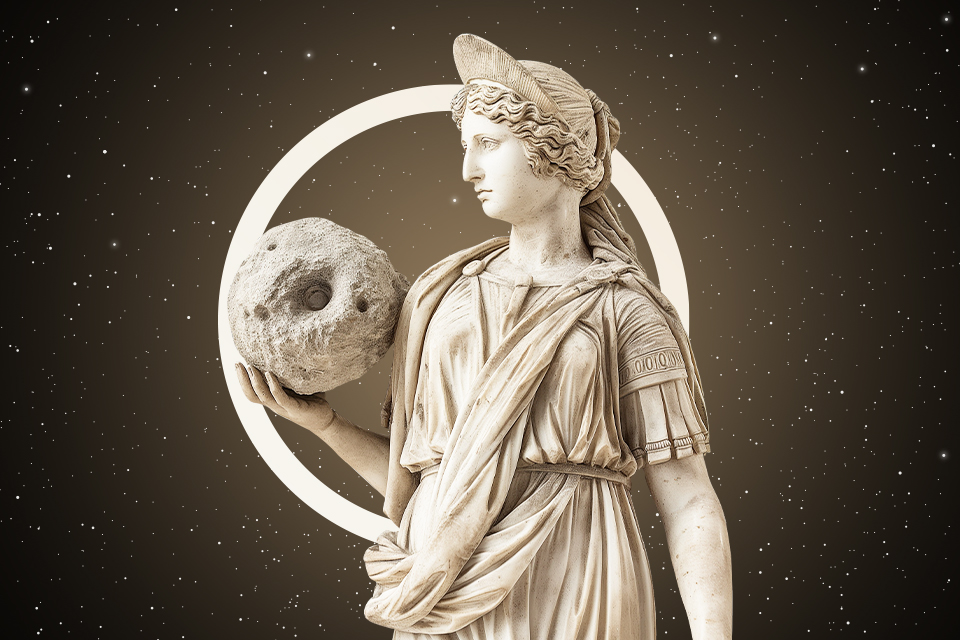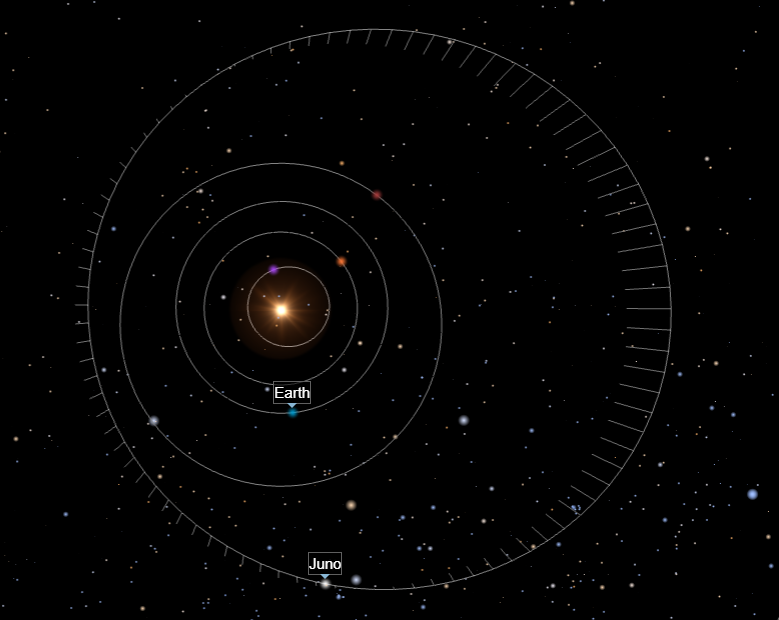The first asteroids were discovered in the early 19th century and for a long time were considered independent planets. Actually, the object that received the number 1 — Ceres — was later really “reclassified” into a planet (albeit a dwarf one). Juno (3 Juno) is listed at number 3 in the asteroid catalog. This year it will be at opposition on March 3.
Juno was discovered by German astronomer Carl Ludwig Harding on September 1, 1804. For this, he needed a telescope with a lens with a diameter of only 5 cm — like a small modern telescope. At the suggestion of the discoverer, the new celestial body was named after the goddess Juno, the wife of Zeus in ancient Roman mythology.

Already in the XX century, it turned out that this celestial body was not so big: its average diameter is about 250 km, that is, according to this indicator, it takes 11th place among the objects of the Main asteroid belt. The reflectivity of Juno’s surface in the visible range (albedo) cannot be called outstanding either — it does not exceed 24%, which is one and a half times less than that of the next Vesta (4 Vesta). How, with such modest indicators, did it manage to be in the top three known asteroids?
The fact is that the orbit of Juno, although not much smaller than the orbits of Ceres and Pallas discovered before it, has a much greater eccentricity (0.2562), that is, it differs much more from the circle. Due to this, at perihelion, this asteroid can approach the Sun at a distance of less than two astronomical units (about 300 million km), and if it finds itself in opposition at this moment, its distance from Earth will be slightly more than 1 au.

However, such “optimal” oppositions happen quite rarely — for example, something similar was observed in 2018, when in mid-November the distance to Juno decreased to 1,039 AU (155 million km), and its visible brilliance exceeded the seventh magnitude. This year, the asteroid will not come closer to us than 1,677 AU (251 million km), while its brightness will reach 8.5ᵐ. It moves against the background of a section of the sky not rich in bright stars in the southern part of the constellation Leo, almost 5° north of the celestial equator, and heads towards the inconspicuous constellation Sextans. For observations, you need a planetarium program or a star map with objects up to 9th magnitude and at least a small binocular with a lens diameter of at least 40 mm.
The next opposition of Juno near its perihelion is expected at the end of October 2031.
Interestingly, Juno became the “heroine” of the first asteroid occultation in history — the closure of a distant star by an asteroid, which was observed from Earth. It happened on February 19, 1958.
Follow us on Twitter to get the most interesting space news in time
https://twitter.comne/ust_magazine


